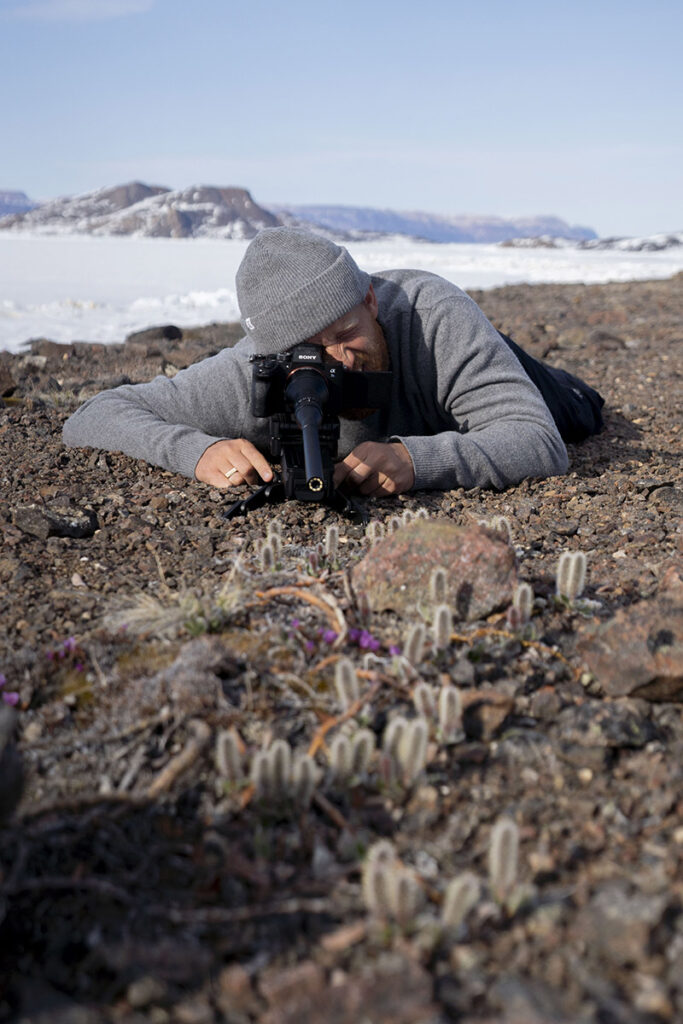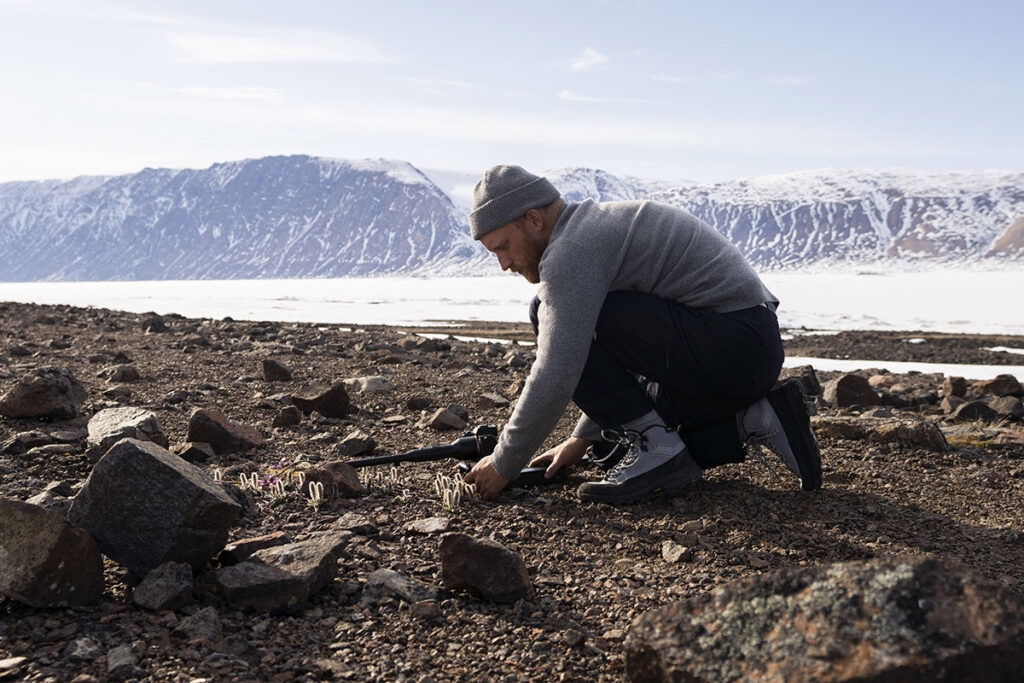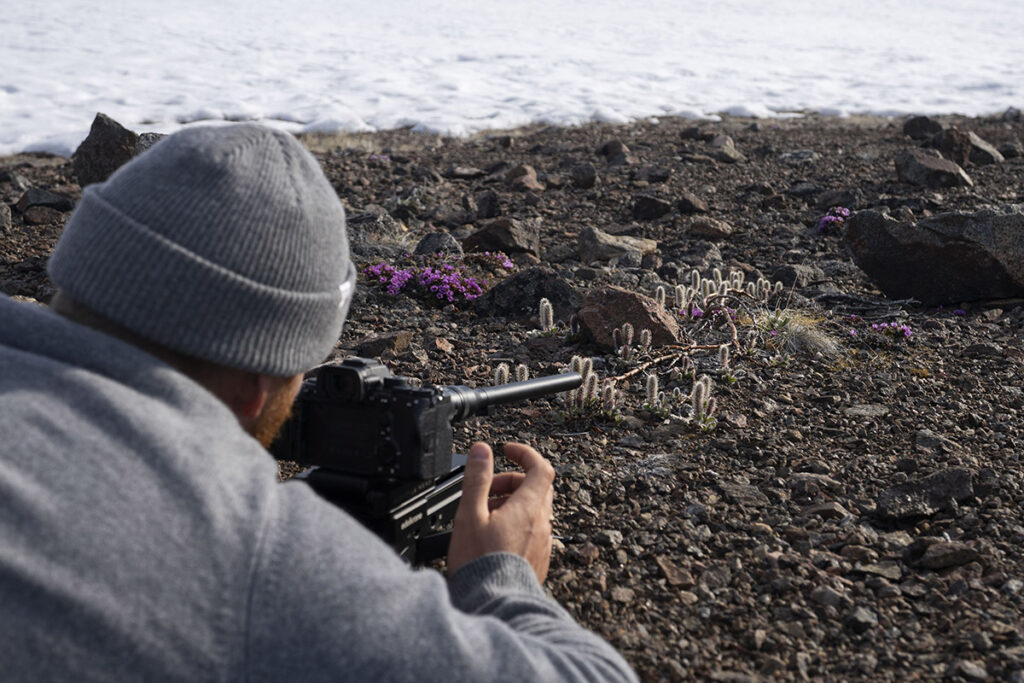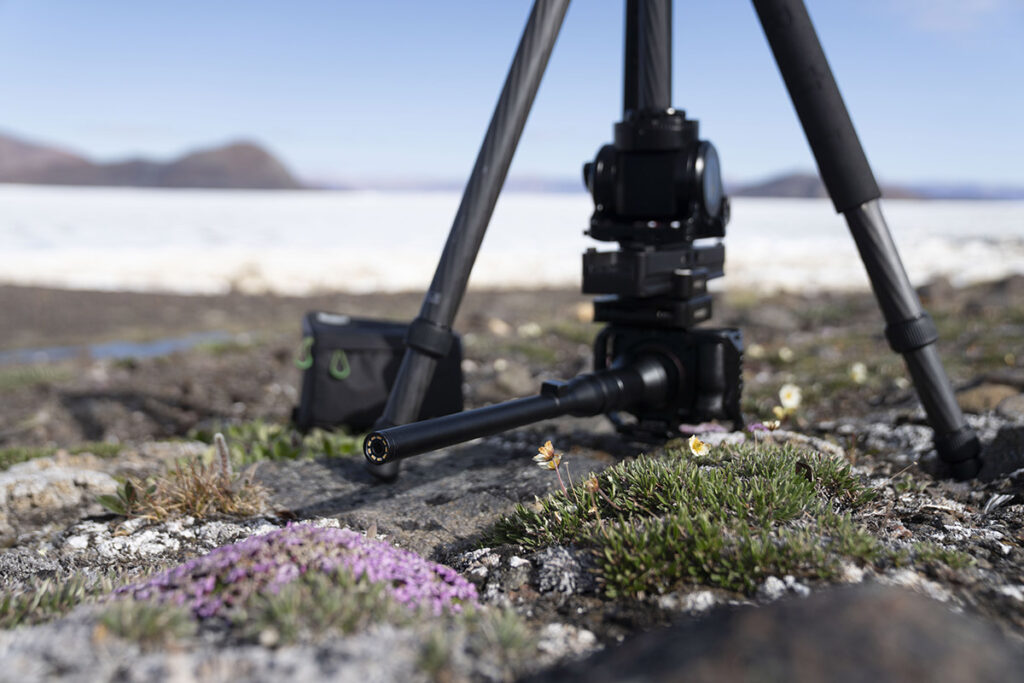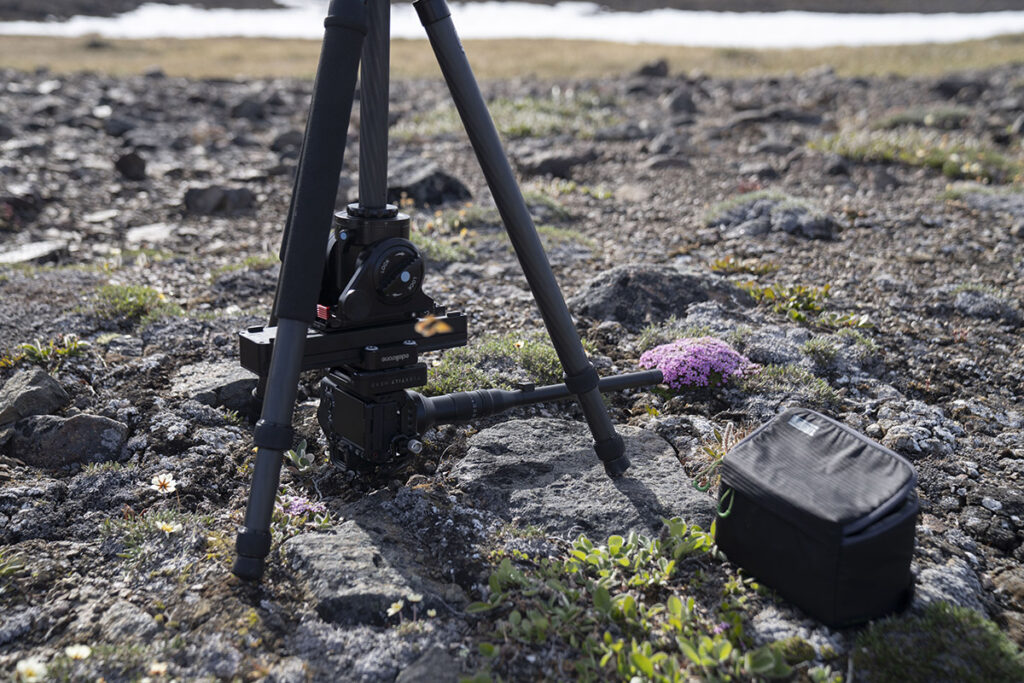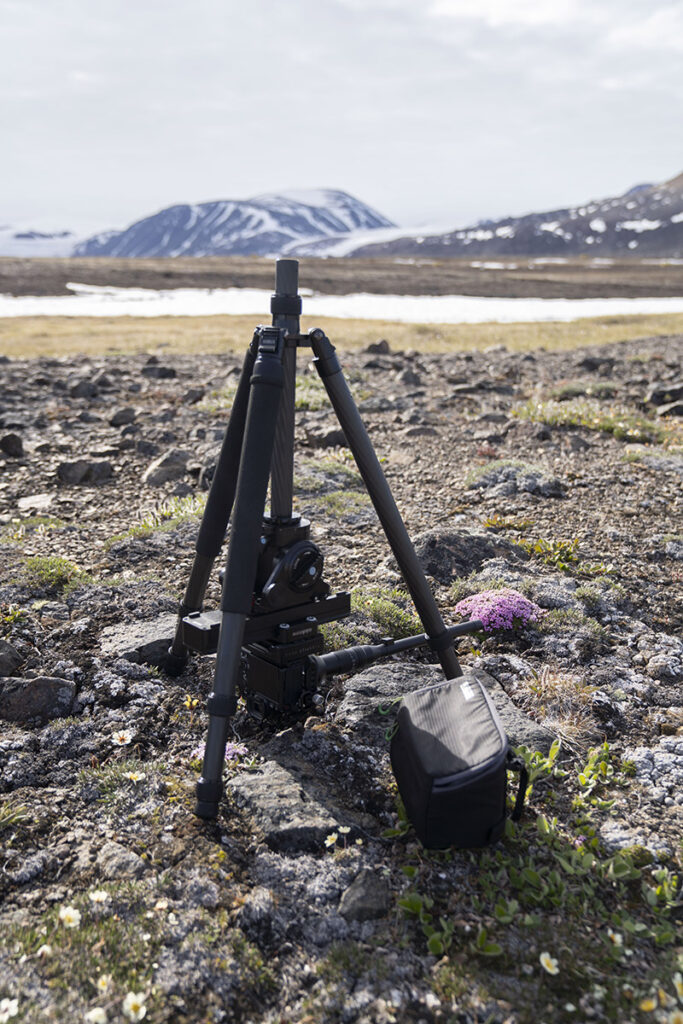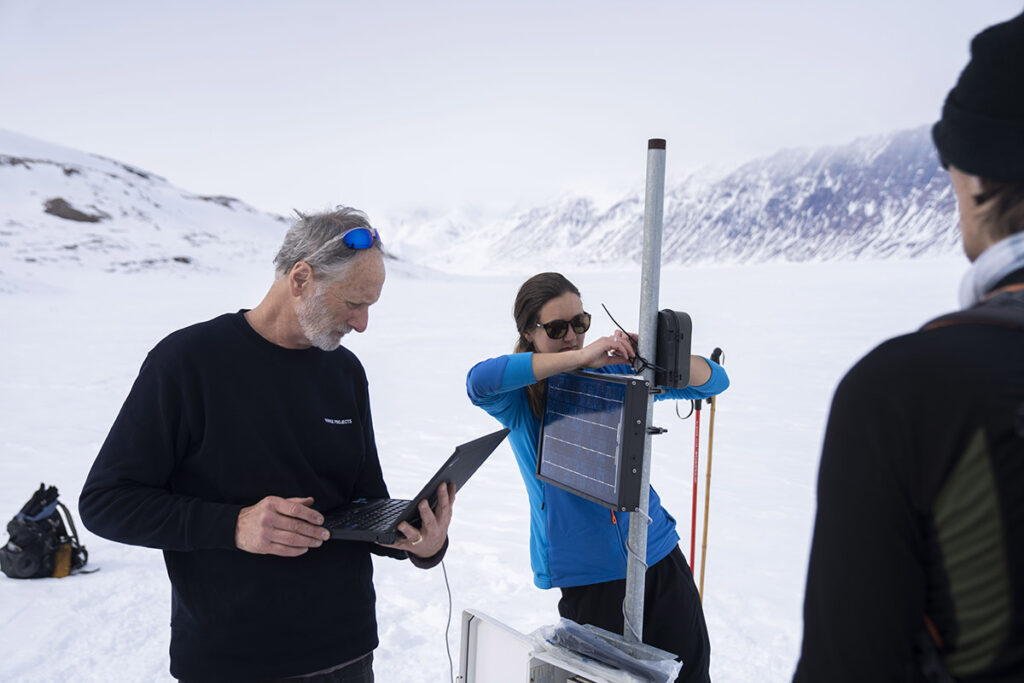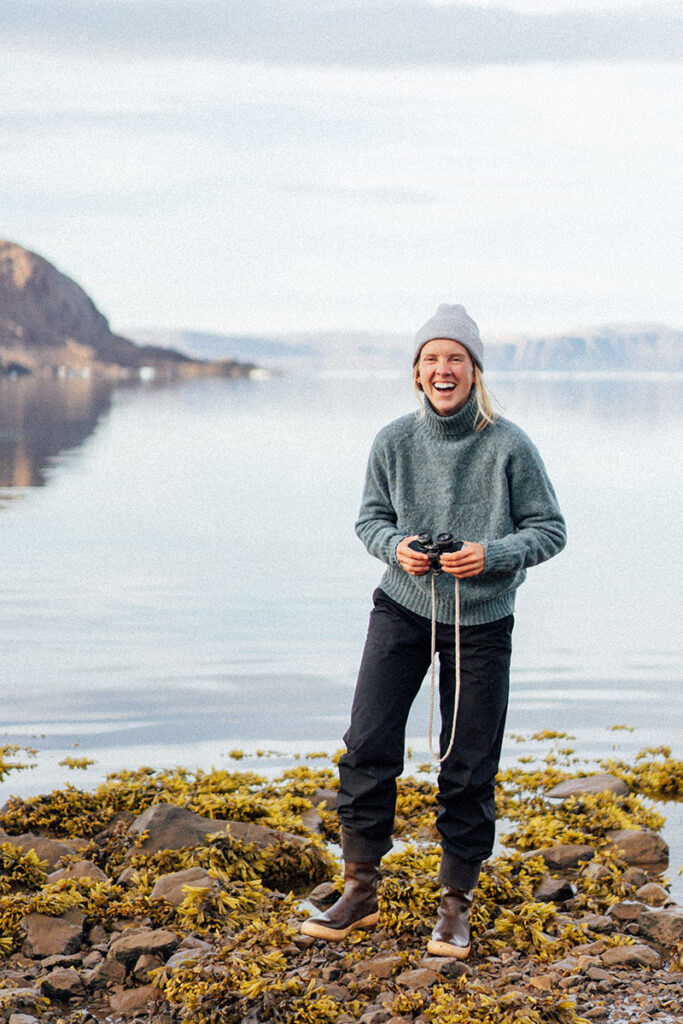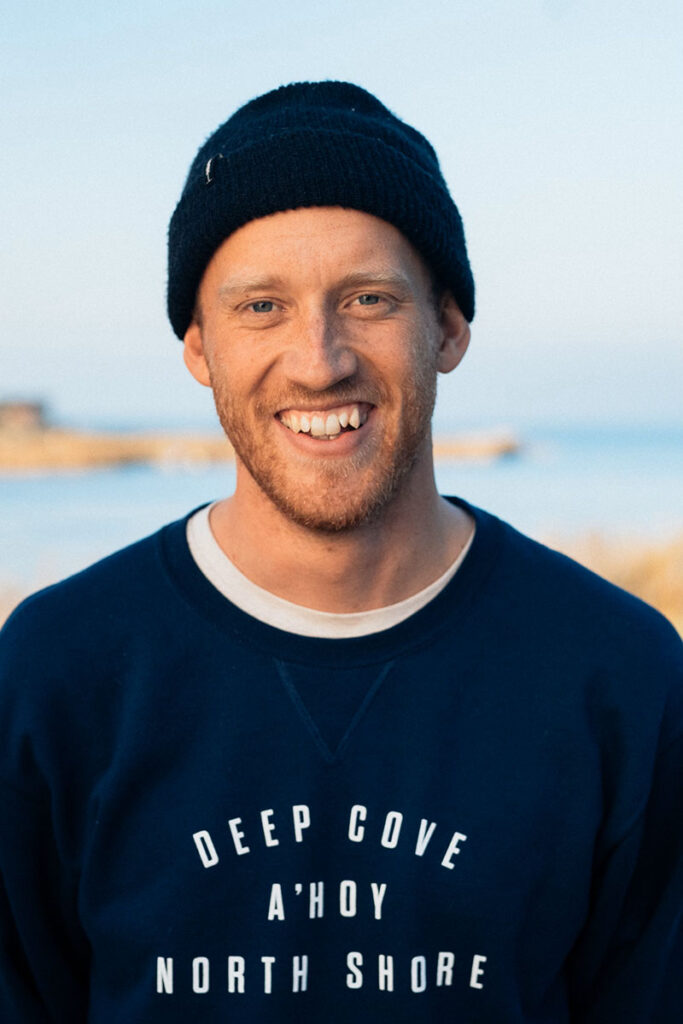Filming in a remote location like Alexandra Fiord sets its limitations in terms of gear and has a great impact on the approach to filming and production. Getting flown in by bushplane, every load is weighed, and the purpose and necessity of every piece of equipment is carefully considered. As research, and not filming, was the main purpose of the field season, we were very limited in how much camera equipment we could bring because of course the priority went to scientific equipment and the like.
For our camera set-up we went with the Sony a7s III and an Atomos Ninja monitor – a powerfull combo capable of shooting 12 bit ProREss Raw. Ditching the monitor for long days in the field, it’s still possible to shoot in 10bit internal 4k in a handy little setup.
The next big factor was the variety of shots we wanted to get. Alexandra Fiord is surrounded by big landscapes, spectacular (and sometimes dangerous!) wildlife, but the science is a story of tiny plants and processes on a very small scale. To cover this wide spectrum we brought the Sony G-master 200-600mm and 70-200mm to get tights shots of the wildlife, the Sony G-master 24-70mm and 16-35mm for landscapes and all-round shots, but most importantly the Laowa 24mm Probe lens for all our miniature work.
The Laowa lens is such a unique piece of equipment, allowing us to get into the world of small plants and insects from a completely new viewpoint. A classic macrolens has its limitations as its principle of build gives a very compressed and flat image, with a very blurry background. This is good for detail shots, but not really ideal when it comes to telling the story of the complex and diverse, tiny tundra environment. The way the Laowa lens is built makes it possible to get wide-angle macro shots, super close up, and still with a wide depth of field. Suddenly this miniature landscape opens up and becomes a world of its own. Small plants becomes trees and insects becomes massive creatures moving through the scene. This really helped us to tell an engaging story in an otherwise hard-to-document setting. The long and thin probe of the lens makes it possible to get really close without disturbing and scaring animals, as well as getting a really low and authentic “eye-level” angle as a spectator into this small community.
Using the Laowa lens for filming is quite difficult. The smallest movement becomes gigantic in the eyes of the little 24mm lens on the end of a long probe. To compensate for this, we paired our A7S with the Edelkrone Slider One to make small slides and push-ins on a microscopic scale. The Slider One allows us to set start and end points only millimeters apart, and then do the motion over x-amount of time. We found the slider to be capable of moving the lens and camera with such accuracy that the footage with the probe lens was perfectly smooth and stabilized. Moving the lens through “a forest” of small plants or close by rocks really added to the cinematic and dramatic feel to the film. The A7siii, Edelkrone Slide One and Laowa lens is powerfull combo to create stunning imagery of anything small scale and opens up a whole new world of subjects everywhere around us.
Sofie, Jakob, and the Tundra Ecology Lab
Amplis Foto is joining Greg and his research crew this summer to document it all – in the hopes that we can help tell a story that will educate and inspire viewers about the science, history, and importance of this remote and beautiful part of the world.
Read the previous articles:



